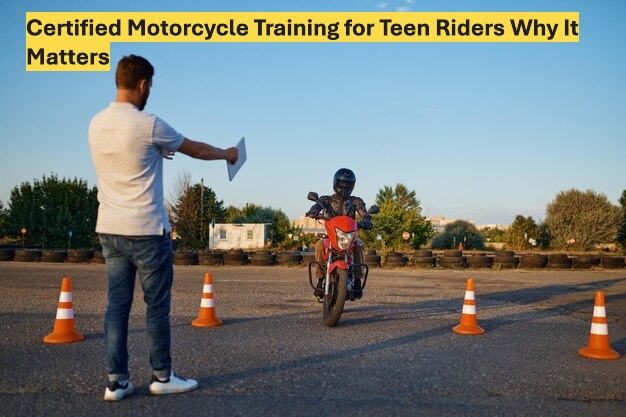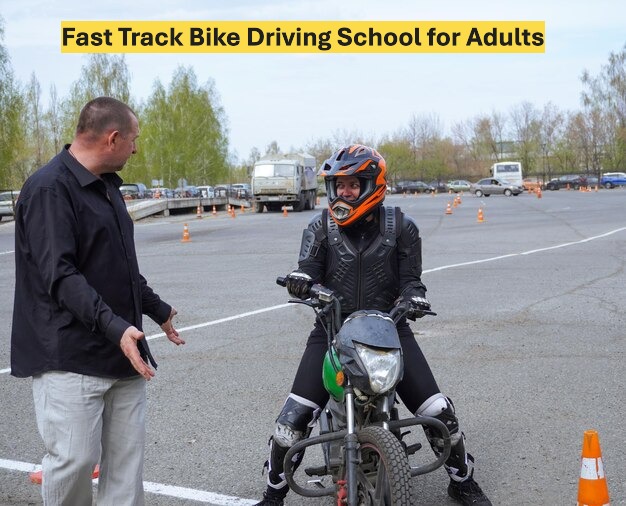Certified Motorcycle Training for Teen Riders Why It Matters

Motorcycling can be an exciting adventure, but it comes with inherent risks, especially for teenagers still developing their driving skills. Certified motorcycle training is crucial for teen riders, helping them develop the skills to ride safely and responsibly. In this article, we’ll dive into the importance of proper training, its benefits, and what teen riders should expect when they undergo certified motorcycle training.
Why Teen Riders Need Certified Motorcycle Training
Teenagers, by nature, are still learning how to make quick decisions in high-pressure situations. Riding a motorcycle requires fast reflexes, awareness of surrounding traffic, and the ability to react to changing road conditions. Certified training programs are designed to teach these essential skills, often not learned through casual riding or without professional instruction.
The Risks of Riding Without Proper Training
When teens attempt to ride without adequate training, they are more likely to make mistakes due to lack of experience. Motorcycle accidents are more common among young riders, and lack of proper training increases the risk of injury. Teen riders need motorcycle rider training for beginners to gain confidence and become safer on the road.
Certified motorcycle training provides teens with the knowledge they need to handle their bikes in a safe and controlled manner. It equips them with techniques for handling different types of weather, roads, and potential obstacles that could arise while riding.
What Does Certified Motorcycle Training Involve?
Various institutions, including community colleges, local motorcycle shops, and private instructors, offer certified motorcycle training programs. The curriculum typically includes both classroom lessons and hands-on riding experience.
Classroom Instruction
Teen riders will learn about motorcycle operations, traffic laws, and essential maintenance in the classroom. They will also be taught how to assess road conditions properly, understand traffic signs, and anticipate potential hazards. Classroom instruction is crucial for building a solid foundation of theoretical knowledge before getting on the bike.
Practical Riding Experience
After the classroom lessons, students move on to the practical aspect of training. During this phase, teens can ride a motorcycle under the supervision of certified instructors. They will learn skills such as cornering, braking, and emergency maneuvers. This hands-on experience is vital for developing muscle memory and gaining the confidence to handle a motorcycle in real-world conditions.
Motorcycle safety courses for beginners are a keyword that has relatively low competition but a high potential for search traffic. This term is ideal for those who are just starting and want to find training programs that cater specifically to new riders, like teens.
Benefits of Certified Motorcycle Training for Teens
Safety Skills
The primary benefit of certified motorcycle training is safety. Teen riders learn how to react to unexpected situations and handle challenging road conditions. Safety training includes strategies for avoiding accidents, such as defensive riding techniques and positioning the bike in different traffic situations.
Confidence Boost
Motorcycle training helps boost a teen’s confidence. As they learn proper techniques, teens become more comfortable with their riding skills, making them less likely to panic or make rash decisions while riding.

Reduced Risk of Accidents
Teens who complete certified motorcycle training have a significantly lower chance of being involved in an accident compared to those who don’t undergo formal training. Trained riders are more equipped to handle dangerous road conditions, and their awareness of potential hazards makes them less likely to fall victim to accidents.
Licensing and Insurance Benefits
A certified motorcycle training program is a prerequisite for obtaining a motorcycle license in many states. Additionally, insurance companies offer discounts for riders who have completed an accredited course. These benefits make certified training a good investment in safety and a cost-effective choice in the long run.
What Should Teen Riders Look for in a Certified Motorcycle Training Program?
Teens and their parents should consider several factors when choosing a certified training program. First, ensure the program is accredited by a recognized authority, such as the Motorcycle Safety Foundation (MSF) or a state-approved agency. Next, look for programs that offer both classroom and practical experience, as both aspects are necessary for comprehensive training. Finally, check the instructor-to-student ratio. Smaller class sizes provide more personalized attention and a safer learning environment.
Motorcycle safety courses near me are another applicable low-competition keyword. This term helps teens and parents find local certified motorcycle training programs in their area, making it easier to choose the right course.
“FAQs“
1. What is the minimum age to take certified motorcycle training?
The minimum age for taking certified motorcycle training varies by state, but it’s typically around 16 years old. Some programs may allow younger riders with parental consent. It’s important to check local regulations to determine eligibility.
2. How long does certified motorcycle training take?
Certified motorcycle training courses typically take 15 to 20 hours, usually spread across a few days. This includes both classroom instruction and practical riding experience. The exact duration may vary depending on the program.
3. Is certified motorcycle training required to get a motorcycle license?
In many states, a certified motorcycle training program is required for obtaining a motorcycle license. However, this may vary, so it’s essential to check with local licensing authorities.
4. Do I need to own a motorcycle to take certified motorcycle training?
No, most certified motorcycle training programs provide the bikes necessary for training. Riders are often encouraged to use the course’s bikes to ensure they learn with equipment designed for beginners.
Conclusion
Certified motorcycle training is an invaluable experience for teen riders. It provides essential safety skills, boosts confidence, reduces the risk of accidents, and may even lead to licensing and insurance benefits. Whether your teen is eager to hit the road or you’re concerned about their safety, enrolling them in a certified motorcycle training course is the best way to ensure they are fully prepared for the challenges of motorcycling.
Investing in certified motorcycle training improves riding skills and enhances overall safety for teen riders, helping them enjoy their rides with confidence and peace of mind.
By focusing on the right keywords and structuring the article for readability and search engine optimization (SEO), you can increase the chances of ranking well on Google for relevant terms related to teen motorcycle training.




